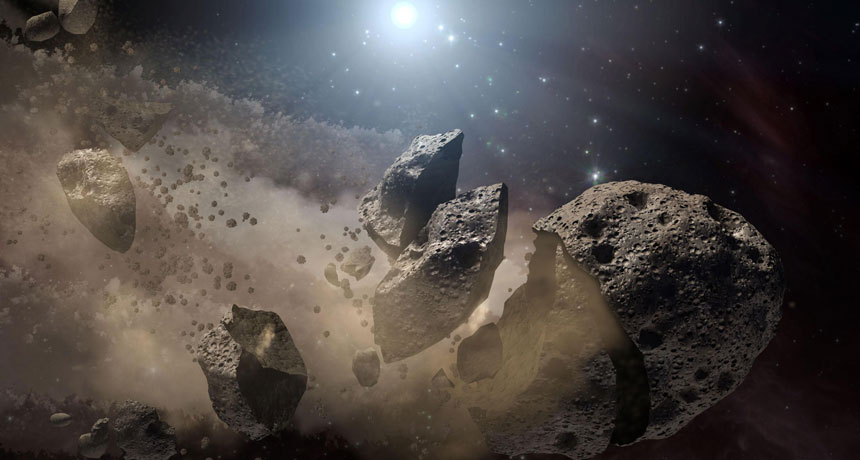Pulsar pulverizes an asteroid
Space rocks disrupt steady beat of dead star 37,000 light-years away

OFF BEAT A billion-ton asteroid, seen in this artist’s rendition, is vaporized by the intense radiation of pulsar PSR J0738-4042. The resulting debris cloud wreaks havoc with the pulsar’s steady beat.
JPL-Caltech/NASA







